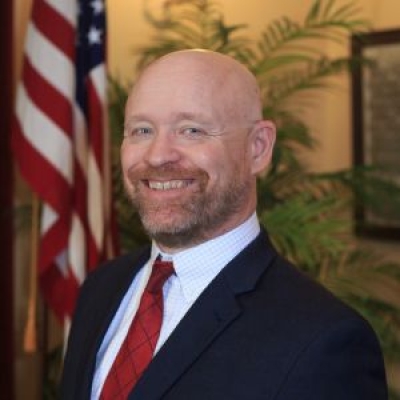NOTES: Today, the Ohio House Finance Committee heard testimony on House Bill 96, the next biennial budget. Fordham’s Vice President for Ohio Policy provided this written testimony on a number of education provisions in the as-introduced version of the bill. However, a substitute version of the bill was released after this testimony was filed and supplemental testimony was required.
For too long, our education system has struggled to meet the urgent demands of the 21st century. The stakes are high. This committee is doing far more—as you know—than merely adjusting spreadsheets. Your decisions will directly impact how prepared Ohio’s children will be to thrive in a world that is growing more competitive, less forgiving, and more dependent on knowledge and skill.
Let me begin with a central, if often overlooked, point: funding formulas should serve students, not institutions. The current model—well-intentioned though it may have been—continues to spiral in cost, largely because it allows outside forces, including local and federal funding outside of the formula, to influence the pace of spending. This is no way to run a railroad, much less a statewide education system. The legislature, not the federal government or local districts, must reclaim the authority to determine how—and how much—we invest in public education. We recommend increasing the base cost by 1.5 percent annually in FY26 and FY27. This increase is not only reasonable but essential as it both recognizes increased costs and avoids what is likely an unsustainable financial trajectory.
On the matter of Disadvantaged Pupil Impact Aid (DPIA), the current approach is bordering on the absurd. When one-third of the students deemed “economically disadvantaged” aren’t because of quirks in a federal meals program, the term loses meaning—and with it, the ability to target resources where they are most needed. “Direct certification” offers a more accurate and honest count of truly low-income children. We should make this shift and increase the DPIA base amount from $422 to $775. Let’s send more dollars to where student need is greatest.
Then there’s the issue of guarantees—a euphemism, frankly, for handing out money to districts that are losing students or growing wealthier. Governor DeWine has proposed a prudent phase-out, and I would urge you to go further. Reducing guarantee bases to 90 percent in FY26 and 80 percent in FY27, and eliminating “supplemental targeted assistance,” would send a clear message: taxpayer dollars must follow students, not prop up outdated structures.
None of these recommendations are radical. In fact, they are modest in fiscal terms—$53 million more in FY26 and $127 million in FY27 than the governor’s proposal. But they represent a major step forward in policy coherence and fiscal discipline; and most importantly, they help ensure dollars go to where the students are and the needs greatest.
***
Let’s talk briefly about school choice. Ohio has made admirable progress on this front, but much work remains. Charter schools—which are public schools, let us remember—continue to operate with one financial hand tied behind their backs. Boosting the facilities allowance to $1,500 per pupil helps rectify that inequity. So does giving these schools actual access to the district buildings that sit vacant year after year, despite being paid for by taxpayers.
The governor’s plan to codify the high-quality charter school program, and to maintain rigorous criteria for participation, deserves your enthusiastic support. We further recommend rolling these funding streams into the main K–12 budget to protect them from future whims and vetoes.
***
Now, a word on career readiness, a topic that Ohio is rightly paying more attention to. The governor’s recommended restructuring of industry-recognized credentials is long overdue. Our system is too often incentivizing students earning low-level certifications that do little to prepare them for the real world. We also need to continue to resist the temptation to lower standards. Letting students earn a foundational element toward graduation based on 250 hours of work-based learning—without mastery of academic content—is a recipe for underemployment and disillusionment. This should be removed from the as-introduced version of the budget.
By contrast, we strongly recommend requiring a career exploration course in middle school. Too many adolescents are being left to drift. They need structured opportunities to discover their aptitudes and understand the pathways available to them, so they can have a meaningful high school experience.
***
We also applaud the governor’s push for improved literacy and numeracy. A universal screener in K–3 is not bureaucratic overreach—it’s common sense. Too many children fall behind before anyone notices. The same is true in math, where a lack of transparency in curricula leaves us flying blind. Require districts to report what they’re using. Better still, publish a list of high-quality options, and make it easier for districts to identify the best math curricula on the market.
And if we are serious about STEM preparation—and we should be—then automatic placement of high-achieving students into eighth-grade Algebra I is a sensible and prudent course of action. We have, for too long, left talent on the table, especially among low-income and minority students.
Lastly, no education system can function well without sound personnel data and clear-eyed staffing decisions. The call to collect vacancy data is long overdue. It’s an important first step in understanding the scope and nature of staffing challenges across Ohio. And school leaders must be free to assign teachers based on what’s best for students—as the governor proposed—not outdated tenure systems that prize seniority over skill.
Members of the committee, I urge you to embrace not just the letter of these reforms but the spirit behind them: that education should be about learning, not systems; about students, not politics; and about the future, not the past.
Let us have the courage to break with tradition when tradition fails our children—and to build an education system worthy of their potential.
Thank you.




